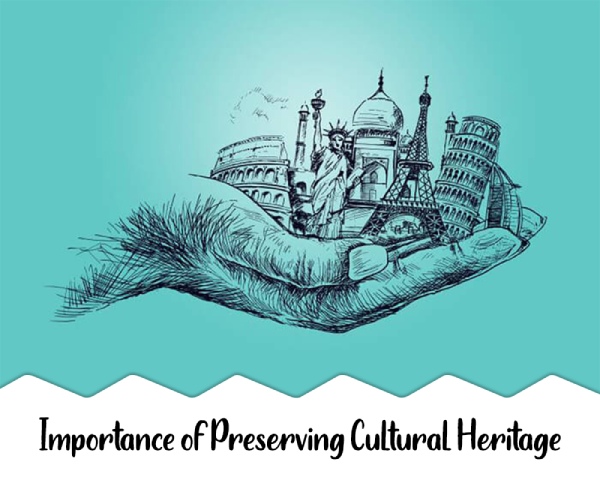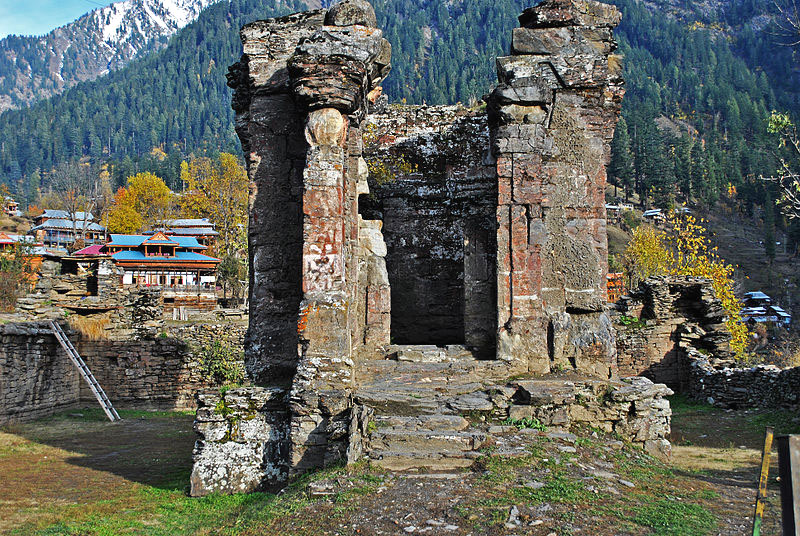Historical Heritage has a great significance in the Modern World That Inspire and Educate our future generations
By M Ahmad
The fast-paced nature of the modern world has brought about rapid changes across various fields, leading to the emergence of new scientific disciplines. However, amidst this dynamism, certain values that have stood the test of time are gaining increased significance. As a result, there has been a surge in research efforts aimed at studying, preserving, and passing on these invaluable heritages to future generations. Preserving Our Past
According to the United Nations Educational, Scientific, and Cultural Organization (UNESCO), “Heritage is our legacy from the past, what we live with today, and what we pass on to future generations. Our cultural and natural heritage are both irreplaceable sources of life and inspiration.” Heritage is also defined as the “expression of the ways of living developed by a community and passed on from generation to generation, including customs, practices, places, objects, artistic expression, and values.” Heritage can not only be expressed in tangible form (including buildings, monuments, landscapes, objects, and artifacts), but also in intangible form (including traditions, language, knowledge, and memory).

The identity of a nation, region, community, or group lies in its past – its historical and cultural heritage, which is unique to that group or society and reflects the rich and diverse creations of humankind. Heritage is often perceived as the protection and preservation of the past. In fact, heritage is important to us because it is fundamental to learning history and serves as evidence of the past human activity of a city.
Heritage also elaborates on the transformative process in social development from the past to the present in urban areas, across generations. Each city and place retain its distinct cultural characteristics and historical background, giving it a specific identity and uniqueness within each community. Historic heritage refers to the natural and physical resources that contribute to an understanding and appreciation of history and cultures. It includes historic sites, structures, places, and areas, archaeological sites, sites of significance, and surroundings associated with natural and physical resources. It has three key elements: a geographical place (e.g. a structure, house, site, or area), associated heritage values and significance, and associated connections with a person, group, or community.
Historical heritage helps us examine our history and traditions and enables us to develop awareness about ourselves. It helps us understand and explain why we are the way we are. It is a keystone of our culture that plays an important role in our politics, society, business, and worldview.
They have intrinsic value and provide a glimpse into our ancient heritage. They offer deeper insight into the cultures and traditions of the old world, allowing us to understand the quality of life enjoyed by people hundreds of years ago. Monuments provide details about the variety and quality of materials used in their construction in the past. They offer a glimpse into the craftsmanship and mining techniques of the time, showcasing the architectural intelligence of the people who built these huge structures without modern technology. Historical monuments make it easy to analyze the history of a place by observing its landmarks.
Furthermore, historical monuments increase the significance of a site and attract visitors from distant lands, thereby boosting foreign currency inflow to a country. They also play a crucial role in education, imparting information about the past in an interesting way. They provide insights into the entertainment and educational value of a place, and monuments with inscriptions can shed light on past languages and modes of communication. Monuments help maintain a sense of permanency and heritage for a city, making it more valuable for the country and fostering emotional connections with cultural roots and traditions. Monuments also serve as symbols of cultural identity and provide guidance for future generations, reminding us of our rich cultural past and serving as national treasures that evoke a sense of pride and civilization.
Historical places not only educate foreign tourists about the historical splendor of a culture, but also inspire locals about their own past, as they are visited by tourists from around the world. Historical places reflect the rule, culture, faith, and changing times of a particular area, not only in India but also around the world. They provide insights into the socio-economic, religious, and political aspects of a country’s history and offer glimpses into the way of life, skills, and knowledge of earlier generations.
In simple terms, historic heritage or cultural and historic places are of great significance due to their historical, physical, archaeological, architectural, and cultural values. Essentially, all heritage places have common elements, with a “story” that reflects the interaction of people with the place. For example, a particular rock may have geological values, but its historic heritage value depends on its association with people, such as tangata whenua or historical personalities, or settlement of the district.
It is clear that historical heritages are precious and represent the pride of their respective countries. They showcase the cultural importance of a place and the architectural achievements of its people. Therefore, it is crucial to conserve, upkeep, and properly maintain these monuments to preserve them for future generations and enlighten them with abundant knowledge about their ancestors and cultural legacy.
Societies that lose touch with their past are destined to repeat mistakes and blunders, and are disconnected from their rich cultural legacy. Therefore, it is important to visit historical monuments with care and respect, and appreciate the cultural, pacifist, and harmonious messages they convey. Accessibility to these locations should be ensured through various modes of transportation, basic amenities should be provided to visitors, and the cultural and historical significance of the location and its legendary figures should be effectively communicated. However, while providing facilities, attention should be paid to preserving the historical uniqueness and original identity of the monuments, and unnecessary commercialization should be avoided.
Heritage encompasses the traditions, customs, and culture of a country that hold significant importance and have been inherited from previous generations. Our present identity is shaped by our heritage and culture, and it is crucial to protect and preserve them for future generations.


Comments are closed.